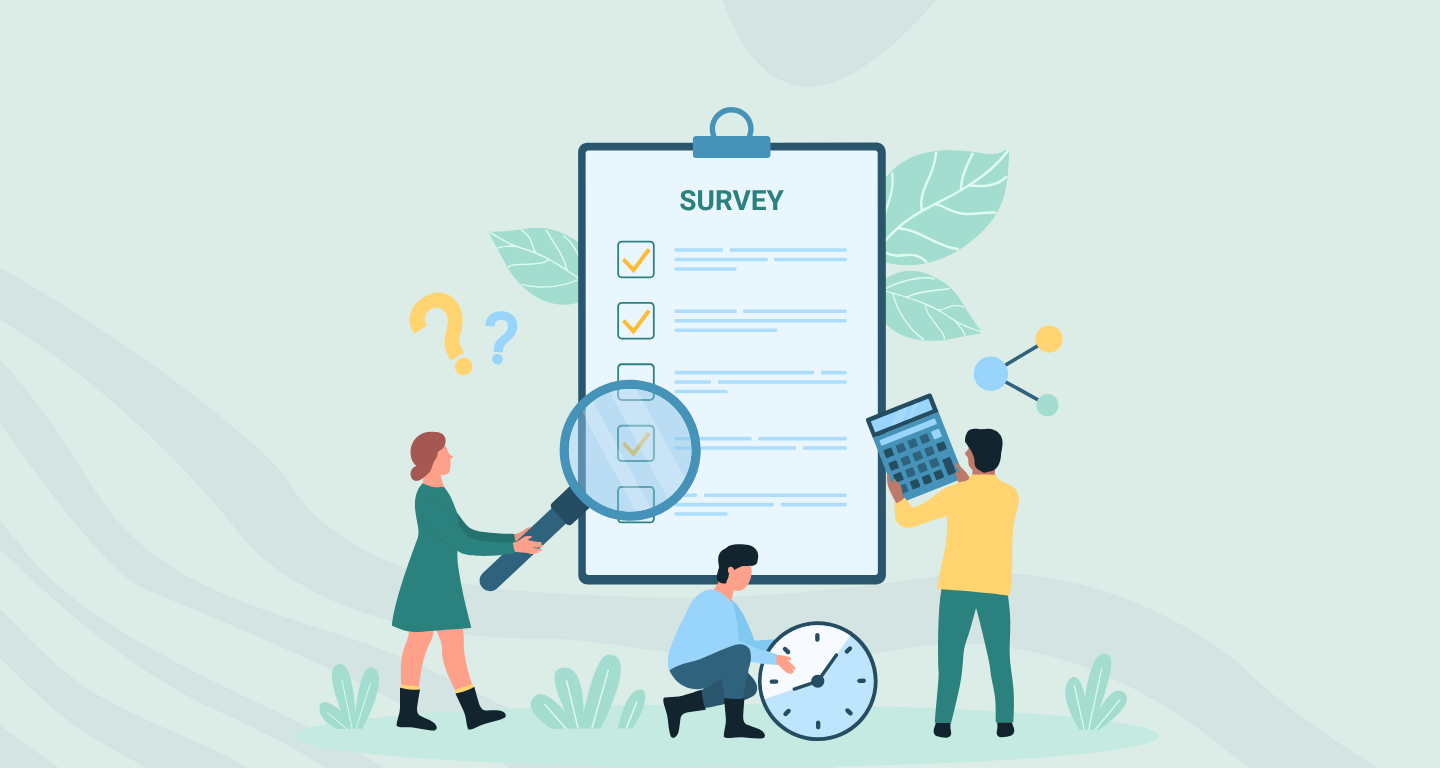In the dynamic world of marketing, understanding the impact of your campaigns is as crucial as the campaigns themselves. Surveys emerge as a potent tool in this analytical arsenal, providing direct insights into how your target audience perceives and reacts to your marketing efforts. They bridge the gap between customer behavior and marketing strategy, allowing you to measure not just superficial engagement, but the deeper effectiveness of your campaigns. Whether it’s gauging brand awareness, product interest, or customer satisfaction, surveys can offer a clear picture of your campaign’s performance and guide your next strategic steps. This makes them an indispensable asset for marketers aiming to refine their approach and achieve better alignment with their audience’s evolving needs and preferences.
Role of Surveys in Marketing Evaluation
Surveys have become an integral component of marketing evaluation, providing quantitative and qualitative data that are essential for gauging a campaign’s success. Through carefully structured questions, surveys can capture the public’s response to marketing activities, allowing businesses to measure variables such as brand recognition, message clarity, and the persuasive power of their campaigns.
This direct feedback from the target audience can pinpoint the strengths and weaknesses of a campaign, offering a clear indication of what resonated with the audience and what did not. By assessing these responses, marketers can determine if the campaign has effectively influenced perceptions, heightened brand awareness, or increased the likelihood of product purchase.
Moreover, the strategic use of surveys post-campaign provides insights that go beyond superficial metrics like clicks or views. They delve into the consumer psyche to understand the emotional and cognitive impact of the marketing message. Surveys can trace the customer’s journey from initial exposure to the final action, revealing the conversion efficacy at each stage of the marketing funnel. By comparing intentions against actual behavior, marketers gain a deeper understanding of the customer decision-making process. This rich vein of data not only validates the direction of current marketing strategies but also informs future campaigns, enabling businesses to iterate and evolve their marketing tactics in alignment with consumer expectations and market trends.
Designing Surveys for Campaign Evaluation
Designing effective surveys for campaign evaluation is both an art and a science, requiring a balance between methodical structure and creative questioning techniques. Here’s a guide to help you through the process:
Establish Clear Objectives:
Begin by defining what you want to learn from the survey. Is it to measure brand awareness, gauge customer satisfaction, or test message effectiveness?
Align your survey goals with specific aspects of the marketing campaign you wish to evaluate.
Drafting Survey Questions:
Develop questions that are clear, concise, and unbiased. Avoid leading questions that could skew results.
Use a mix of open-ended questions for qualitative insights and closed-ended questions for quantitative analysis.
Ensure that questions are directly tied to the objectives of the campaign for relevance and focus.
Questionnaire Flow:
Start with easy, engaging questions to warm up respondents and reduce abandonment rates.
Group similar topics together to create a logical flow and make the survey easier to complete.
Place more sensitive or demographic questions towards the end to prevent early drop-offs.
Length and Timing:
Keep the survey as short as possible while capturing all necessary data to ensure higher completion rates.
Consider the timing of the survey launch in relation to the marketing campaign. Deciding between immediate post-campaign or after a certain period can affect the type of feedback received.
Sampling and Segmentation:
Determine the target audience for your survey based on the campaign’s target demographic.
Decide on sampling methods—whether it will be a random sample, a segmented group, or the entire audience base.
Testing and Feedback:
Pilot the survey with a small, controlled group before a full rollout to test question clarity and flow.
Use the feedback to make necessary adjustments to the survey design.
Technology and Tools:
Choose the right survey platform that can handle the type of survey you are creating, considering factors like mobile optimization and user-friendly design.
Ensure that the platform can provide the data and analytics you need for post-survey evaluation.
Legal and Ethical Considerations:
Ensure that your survey complies with privacy laws and regulations, such as GDPR if applicable.
Be transparent about how you will use the data and give respondents the option to remain anonymous if they prefer.
By following these guidelines, you can create a survey that not only gathers valuable data for evaluating your marketing campaign’s success but also respects the experience and privacy of the respondents, leading to more accurate and actionable insights.
Key Metrics to Measure with Surveys
When utilizing surveys to measure the success of marketing campaigns, there are several key metrics that can provide a comprehensive understanding of a campaign’s performance. One fundamental metric is brand awareness, which can be divided into aided and unaided recall. Aided recall measures the recognition of a brand when its name is presented to the respondent, while unaided recall assesses whether respondents can recall the brand name without any prompts, indicating a stronger impression.
Another critical metric is customer engagement, which can be evaluated by questions regarding the frequency and depth of interactions with the campaign. This could include actions such as sharing content, participating in related online conversations, or the amount of time spent with the campaign materials.
Conversion rate is another essential metric that can be directly influenced by marketing campaigns. Surveys can track the effectiveness of a campaign in prompting a consumer to take a desired action, such as making a purchase or signing up for a newsletter. This metric can often be the ultimate indicator of a campaign’s ROI. Additionally, customer satisfaction and loyalty are vital for long-term success, and post-purchase surveys can measure these aspects by exploring customers’ perceptions of the product or service and their likelihood to repurchase or recommend the brand to others. Metrics like the Net Promoter Score (NPS) serve as a reliable gauge of customer loyalty and the overall health of the brand in relation to the campaign. By meticulously measuring these metrics, marketers can not only assess the immediate impact of a campaign but also its long-term contribution to brand equity and customer relationships.
Integrating Surveys into Campaign Strategy
Integrating surveys into your campaign strategy requires thoughtful planning and execution. From the outset, incorporate feedback mechanisms such as pre-campaign surveys to set benchmarks and post-campaign surveys to assess performance against those benchmarks. Embed survey touchpoints at critical moments during the campaign to capture real-time reactions and adjust tactics accordingly.
By doing so, you convert passive campaign exposure into an active dialogue with your audience, ensuring that your strategy is not just broadcast but also responsive. This feedback loop not only heightens the relevance and effectiveness of your campaign as it unfolds but also equips you with valuable insights for future planning, making your marketing efforts increasingly data-driven and consumer-centric.
Analyzing Survey Data for Insights
Analyzing survey data to extract meaningful insights is a multi-layered process that involves both numerical analysis and interpretation of nuanced feedback. Quantitative data gleaned from closed-ended questions provide statistical significance and can be graphically represented to spot trends, compare group responses, and measure deviations from expected results. Qualitative data from open-ended questions, on the other hand, require thematic analysis to discern patterns in attitudes or perceptions. Cross-tabulation is often employed to understand the relationship between different variables and to delve deeper into the subsets of data.
The ultimate goal is to transform raw data into a cohesive narrative that tells the story of your campaign’s impact, guiding future marketing initiatives with evidence-based insights and actionable intelligence. This analytic phase is crucial; it’s where the numbers and comments are distilled into strategic learnings, providing a compass for refining marketing messages, targeting, and overall campaign strategy.
Best Practices for Survey-Based Campaign Evaluation
In survey-based campaign evaluation, it’s crucial to design the survey with precision and purpose. Begin with a clear understanding of what you aim to measure—whether it’s brand awareness, customer satisfaction, or advertising recall. Ensure that each question directly contributes to these goals without leading the respondent or introducing bias. Keep the survey succinct to respect the respondent’s time and increase completion rates, employing a mix of quantitative and qualitative questions to capture a full spectrum of insights. Pre-testing the survey on a small, representative sample is also a must to iron out any ambiguities and to ensure the questions flow logically from one to the next.
Once the survey is deployed, it’s all about maintaining the integrity of the process. Uphold ethical standards by securing consent and protecting respondent privacy, and consider timing to catch respondents when their campaign experiences are top of mind. When analyzing responses, look beyond the surface numbers to understand the ‘why’ behind them, particularly through open-ended responses that often yield the richest insights. After extracting key themes and patterns, translate these findings into actionable strategies. And, importantly, close the loop by communicating how customer feedback has been utilized, which can foster stronger relationships and encourage future engagement in surveys.
Wrapping Up
To conclude, leveraging surveys for campaign evaluation is a powerful approach that transforms subjective perceptions into objective data, guiding marketers through the nuanced landscape of consumer opinion. A well-executed survey can act as a diagnostic tool, unveiling the successes and shortcomings of a marketing campaign, while also highlighting opportunities for optimization.
By adhering to best practices—from the careful design of questions to the ethical handling of data, and thoughtful analysis of results—marketers can ensure that each campaign is not just a standalone venture but a stepping stone towards greater understanding and engagement with their audience. In an era where data is king, such informed insights are invaluable, empowering brands to craft campaigns that resonate more deeply, engage more effectively, and ultimately, drive meaningful business outcomes.











